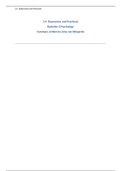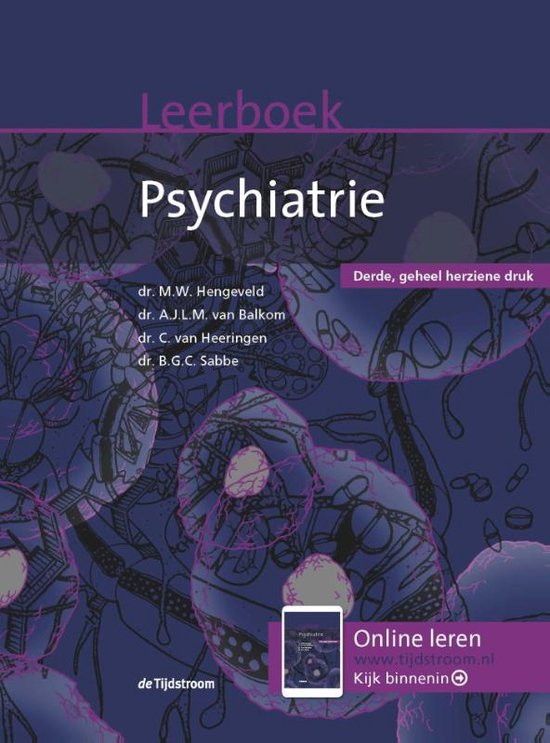3.4. Depression and Psychosis
3.4. Depression and Psychosis
Bachelor-3 Psychology
Summary written by Amy van Wingerde
________________________________________________________________
, 3.4. Depression and Psychosis
Task 2: Bipolar disorder
Sources
1. Hengeveld et al. (2009).
2. Kessing et al. (2018), Lam et al. (2003), Frank et al. (2005)
3. Marangoni et al. (2015), Uchida et al. (2015), Kowatch et al. (2016)
4. Johnson et al. (2012), Kyaga et al. (2011), Power et al. (2015), Keller et al. (2015)
General informaton about bipolar disorder from Hengeveld et al. (2009) and DSM-5ㅂ
- Classificatons according to the DSM 5ㅂ:n Bipolar I disorder, bipolar II disorder (hypomanic),
cyclothymic disorder (>2 years, not meetng criteria), substance/medicaton-induced bipolar
and related disorder, bipolar and related disorder due to another medical conditon, other
specifed bipolar and related disorder, and unspecifed bipolar and related disorder.
- Essental feature is a manic period, mostly feeling ‘on top of the world’, doing multple
things at a tme, infated self-esteem, sometmes delusions, decreased need for sleep, speed
can be rapid and loud, thoughts race faster than speech, distractbility, psychomotor
agitaton, more social contact, reckless and optmistc behavior, social and functonal
impairment.
- Twelve-month prevalence is 0.6% in USA, twelve-month prevalence across 11 countries
ranged from 0.0% to 0.6%; lifetme male-to-male prevalence rato is 1:n1.
- Mean age of onset is at 18 years old; adolescence or young adulthood.
- Risk factors:n Environmental (more common among high SES; separated, widowed or
divorced people have a higher risk), genetc (10-fold increase in risk when relatves have it,
schizophrenia and bipolar disorder share genes), and course modifers (psychosis).
- Treatments:n Mood stabilizers (e.g., lithium, valproate, carbamazepine) and other
medicatons (antdepressants only in combinaton with mood stabilizers; benzodiazepines;
antpsychotcs) and psychotherapy.
- High levels of norepinephrine and dopamine in the brain during manic episodes;
abnormalites in HPA-axis; during mania, more blood fow to prefrontal cortex, and bigger
basal ganglia, amygdala, and smaller hippocampus; dysregulated circadian rhythm;
stressful circumstances; personal variables connected to mania (drive, goal-driven,
incentve motvaton); low social support.
- Culture:n Not much known, because the instruments are just translated, but the prevalence
was lower for Afro-Caribbeans than African-Americans or whites.
- Gender:n Females are more likely to experience rapid cycling and mixed states and have
comorbidity, they also experience the depressive symptoms more ofen.
- Suicide risk:n Lifetme risk is 15 tmes than that of the general populaton.
- Comorbidity:n Anxiety disorders, conduct disorders, ADHD, substance use disorder, metabolic
syndromes, migraine.
DSM-5ㅂ criteria Bipolar disorder
For the diagnosis of bipolar I disorder, it is necessary to meet the following criteria for a manic
episode. The manic episode may have been preceded by and may be followed by hypomanic or
major depressive episodes.





